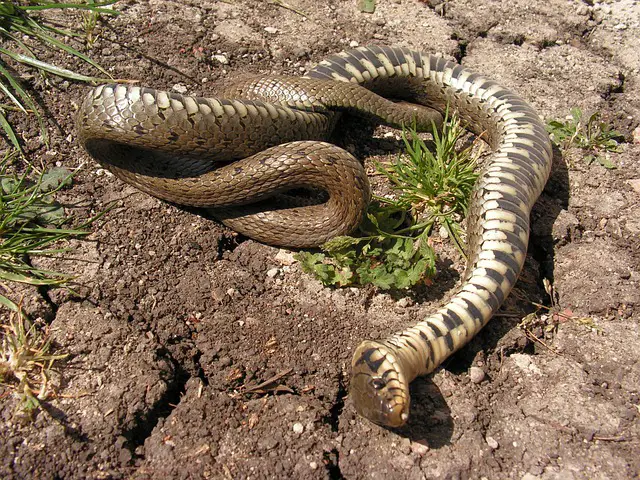It’s a phenomenon that has baffled snake enthusiasts for years. When encountering a dead snake, you’ll be walking through the woods, minding your own business. But as you move it out of your way, the snake suddenly comes back to life and slithers away! Why does this happen? Some people believe that the snake is not dead but playing possum. Others think the snake is truly dead but somehow returns to life because of its natural survival instincts. But what do the experts say?
Why do dead snakes move?
When a snake dies, its nervous system no longer functions and cannot move its muscles.
However, some reflexes are still present, and the snake may sometimes appear to move even after death. This is most likely due to the contraction of postmortem skeletal muscle, which can cause the body to twitch or convulse.
The movement may also be due to the decomposition of tissue, which can cause the muscles to loosen and contract. In some cases, snakes have been known to ‘strike’ even after death.
This is usually due to rigor mortis, which can cause the muscles to stiffen and the mouth to open.
However, it is essential to note that a dead snake cannot bite or harm humans.
Understanding more
The first thing to understand is that snakes are cold-blooded animals. This means that their body temperature is not internally regulated but is determined by their surroundings.
In cold weather, snakes will often seek out warm places Tosun themselves so they can raise their body temperature. However, they often seek out shady or cool areas to lower their body temperature in hot weather.
When a snake dies, its body temperature drops to match the surrounding environment. For example, if the climate is cold, then the snake’s muscles will contract and stiffen due to the cold temperature.
This can give the appearance of rigor mortis, the stiffening of muscles after death that occurs in mammals. In hot weather, however, a dead snake’s muscles will relax due to the heat.
This can make it appear like the snake is coming back to life and slithering away.
Other factors
Other factors can contribute to a dead snake appearing to move. For example, if a predator comes across a dead snake, it may start to eat it from the tail end first. As it does so, the slack in the snake’s body may cause the head end to appear as though it is moving. Or if ants or other insects are crawling on a dead snake’s body, this can also make it appear as though the snake is moving.
Conclusion
So there you have it! The next time you see a dead snake seemingly come back to life, you’ll know that there’s a perfectly logical explanation for it. But even though we know why this happens, it doesn’t make it any less creepy!




